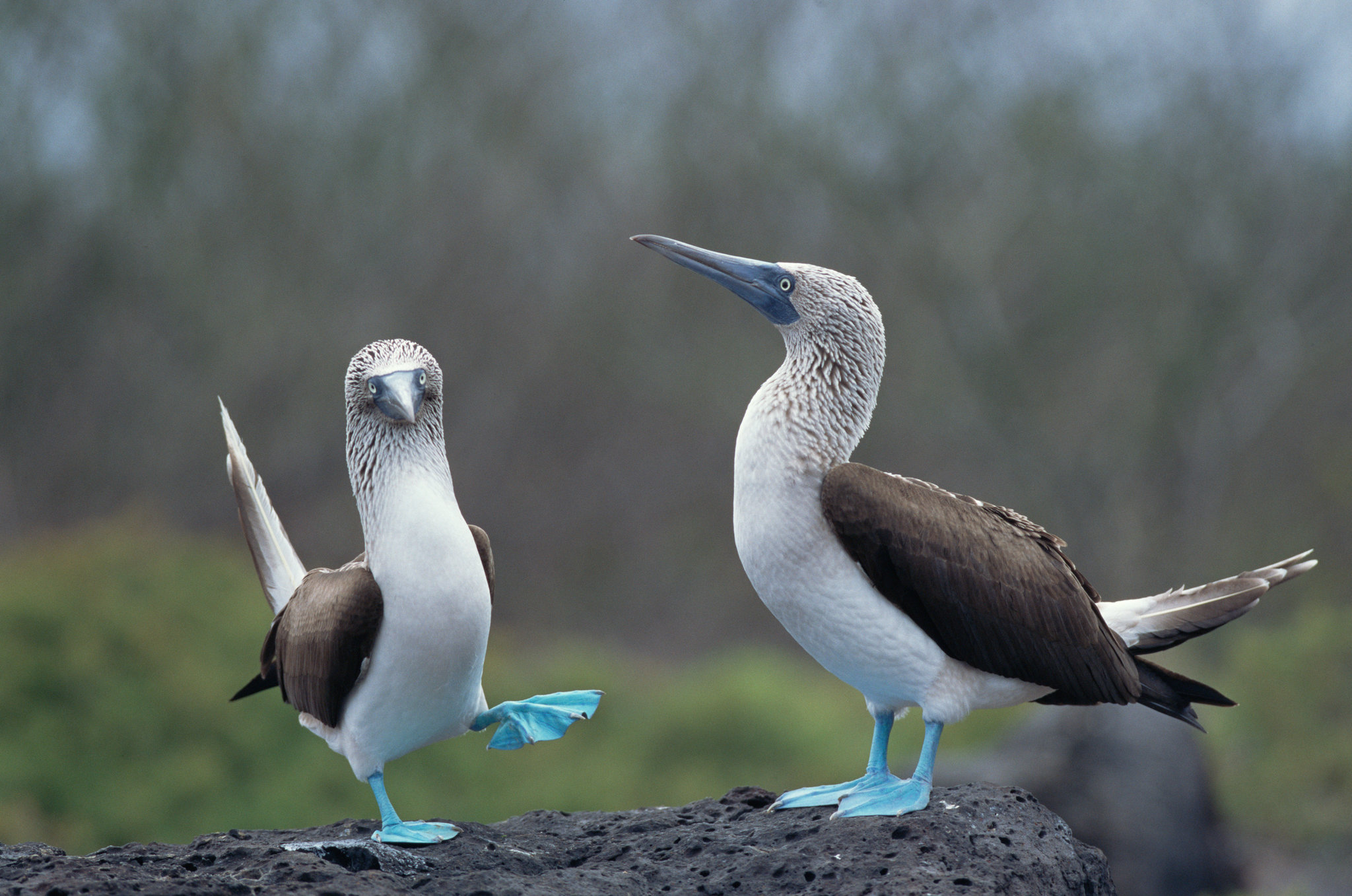
The 18 most-wanted birds in North America
Blue-Footed Booby
1. Despite its sizeable breeding population in the Gulf of California, Blue-footed Booby rarely strays north of the U.S.-Mexico border (until the 2013 invasion, that is). The most likely spot to see it in the U.S. is southern California’s Salton Sea, but there are no guarantees. eBird has records from three of the last seven years, all from July through November. 2. Pelagic birding tours off the southern California coast spot Blue-footeds occasionally, and vagrants have been seen in Texas, New Mexico, Arizona, Nevada, Oregon, and Washington. 3. Since 1994, boobies and other native birds that breed on islands in the Gulf of California have benefitted from a rat-eradication project. For example, in 2007, rats were killed off on San Pedro Mártir Island, home of one of the world’s largest Blue-footed Booby colonies. Mexico’s islands could be rat-free by 2025. 4. The bird’s namesake feet are the reason for its popularity — with birders and with other boobies. Males and females choose their mates based on how bright their feet are. 5. And for good reason: Carotenoids consumed while eating determine the shade of blue, so the feet are a good indicator of the bird’s overall health. 6. In a 21-year study in Mexico, scientists found that a Blue-footed’s best breeding years are between the ages of 6 and 12. As they age, boobies are less likely to pair up because their feet become duller. 7. To have a chance to produce young later in life, adult males appear to take a year off from breeding. The extra time is thought to make their feet more attractive to females. 8. If you visit the Galapagos, you can’t miss Blue-footed Booby, but in the last decade, anecdotal evidence suggests numbers have declined. 9. The Galapagos Conservation Trust launched a systematic study in 2011. Early results show the species has suffered a 50-percent drop since the 1960s. 10. What’s more, recent breeding success appears to be low, likely due to a shortage of prey in the ocean. “The adults seem to have enough food to live,” says lead researcher Dave Anderson, “but not enough to raise their offspring.”
1. Despite its sizeable breeding population in the Gulf of California, Blue-footed Booby rarely strays north of the U.S.-Mexico border (until the 2013 invasion, that is). The most likely spot to see it in the U.S. is southern California’s Salton Sea, but there are no guarantees. eBird has records from three of the last seven years, all from July through November. 2. Pelagic birding tours off the southern California coast spot Blue-footeds occasionally, and vagrants have been seen in Texas, New Mexico, Arizona, Nevada, Oregon, and Washington. 3. Since 1994, boobies and other native birds that breed on islands in the Gulf of California have benefitted from a rat-eradication project. For example, in 2007, rats were killed off on San Pedro Mártir Island, home of one of the world’s largest Blue-footed Booby colonies. Mexico’s islands could be rat-free by 2025. 4. The bird’s namesake feet are the reason for its popularity — with birders and with other boobies. Males and females choose their mates based on how bright their feet are. 5. And for good reason: Carotenoids consumed while eating determine the shade of blue, so the feet are a good indicator of the bird’s overall health. 6. In a 21-year study in Mexico, scientists found that a Blue-footed’s best breeding years are between the ages of 6 and 12. As they age, boobies are less likely to pair up because their feet become duller. 7. To have a chance to produce young later in life, adult males appear to take a year off from breeding. The extra time is thought to make their feet more attractive to females. 8. If you visit the Galapagos, you can’t miss Blue-footed Booby, but in the last decade, anecdotal evidence suggests numbers have declined. 9. The Galapagos Conservation Trust launched a systematic study in 2011. Early results show the species has suffered a 50-percent drop since the 1960s. 10. What’s more, recent breeding success appears to be low, likely due to a shortage of prey in the ocean. “The adults seem to have enough food to live,” says lead researcher Dave Anderson, “but not enough to raise their offspring.”
Advertisements
11 June 2022
Advertisements



